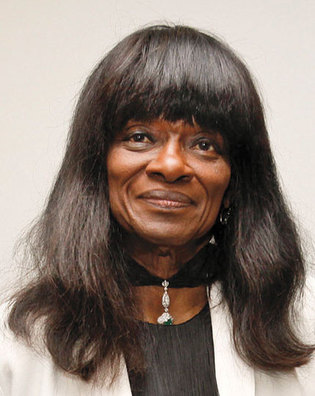 loading
loading
Where They Are NowWoman of stelesAn author-artist inspired by Egypt.  Michael S. Wirtz/Philadelphia InquirerView full imageMany people know Barbara Chase-Riboud ’60MFA as a poet and author of historical novels, most notably Sally Hemings (1979), a study of Thomas Jefferson’s enslaved mistress. But Chase-Riboud, who studied graphic design at the School of Art, is an equally accomplished sculptor. The Philadelphia Museum of Art’s exhibit Barbara Chase-Riboud: The Malcolm X Steles—which features pieces inspired by ancient funerary monuments—is on display there until January 20. It will travel to the Berkeley Art Museum in the spring. Y: You described your work as archeological excavations of history. Can you expound on that idea? C-R: I usually find my subject matter in historical contexts and historical themes. This approach began with my first visit to Egypt when I was very young and impressionable and it has continued over a lot of areas and borders from Egypt to China to Peru. Y: How do you choose the subjects for your sculptures and monuments? C-R: I don’t choose the subjects for my steles. They choose their own subjects. I name them after they are made. That’s what’s interesting about the Malcolm X steles. They are not about Malcolm X as a historical figure, but they are monuments to his memory. Y: Didn’t he have special significance to you? What was it about him, his life, and what he stood for? C-R: He is a historical novel in himself. His transformation from a convict to a world leader was extraordinary. Y: There seems a strong connection in your work to Egyptian culture. C-R: Egypt was my first real exposure to a non-Western culture. When I was very young, I took a long voyage from Rome to Alexandria and then to Cairo and then up the Nile to the Sudan and to Khartoum. The first real turning point in my life—not the last, but the first—was Egypt. The discovery that Western civilizations had serious competition was astounding. This really influenced my first year in Europe and the way I saw sculpture. Everything in Europe seemed to look like a wedding cake after Khartoum and Luxor. Y: Did you travel alone? That was very ambitious at that time. C-R: Yes. Well, not only was it ambitious; it was also the most foolhardy thing. I did not tell my mother I was going until I was safely back at the American Academy in Rome with my uniform on. This was 1957–58, just after the Suez Crisis. The American cultural attaché, who rescued me in Cairo, wondered why the hell I was wandering around Egypt on my own. I could have ended up in someone’s harem. Y: You are working on a compilation of your letters to your mother. C-R: She saved every single letter from the time she put me on the boat to Europe in 1957 until her death in 1991. The letters are evidence of two people and their relationship, one to another, and their evolution over 30 years is extraordinary. Y: Why disclose this aspect of your personal life? C-R: I don’t have my mother’s replies to these letters, but she is present on every single page in a way that she seems to speak out. As a universal gesture, I decided to publish them for her. She was a witness to this becoming and seemed to be a goddess sitting in a temple listening to the chatter of prayers being thrown at her by this little girl.
The comment period has expired.
|
|